New Printable Worksheets and Lesson Activities. Page 6
English Language Arts
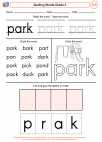
Why is Spelling Important? It is important to spell words correctly when writing. There are some words that are difficult to learn and to remember how to spell correctly. Homonyms, plurals, and possessive words are often difficult to
remember how to spell correctly.
Worksheet Spelling WordsGrade 3
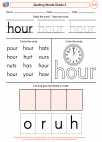
Why is Spelling Important? It is important to spell words correctly when writing. There are some words that are difficult to learn and to remember how to spell correctly. Homonyms, plurals, and possessive words are often difficult to
remember how to spell correctly.
Worksheet Spelling WordsGrade 3

Use grammar concepts and skills that strengthen oral and written language
Distinguish between complete and incomplete sentences

Why is Spelling Important? It is important to spell words correctly when writing. There are some words that are difficult to learn and to remember how to spell correctly. Homonyms, plurals, and possessive words are often difficult to
remember how to spell correctly.
Worksheet Spelling WordsGrade 3
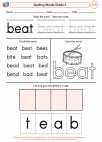
Why is Spelling Important? It is important to spell words correctly when writing. There are some words that are difficult to learn and to remember how to spell correctly. Homonyms, plurals, and possessive words are often difficult to
remember how to spell correctly.
Worksheet Spelling WordsGrade 3

Integration of Knowledge and Ideas
Describe the logical connection between particular sentences and paragraphs in a text (e.g., comparison, cause/effect, first/second/third in a sequence).
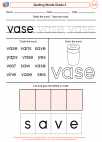
Why is Spelling Important? It is important to spell words correctly when writing. There are some words that are difficult to learn and to remember how to spell correctly. Homonyms, plurals, and possessive words are often difficult to
remember how to spell correctly.
Worksheet Spelling WordsGrade 3

Why is Spelling Important? It is important to spell words correctly when writing. There are some words that are difficult to learn and to remember how to spell correctly. Homonyms, plurals, and possessive words are often difficult to
remember how to spell correctly.
Worksheet Spelling WordsGrade 3

Use grammar concepts and skills that strengthen oral and written language
Distinguish between complete and incomplete sentences
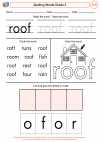
Why is Spelling Important? It is important to spell words correctly when writing. There are some words that are difficult to learn and to remember how to spell correctly. Homonyms, plurals, and possessive words are often difficult to
remember how to spell correctly.
Worksheet Spelling WordsGrade 3
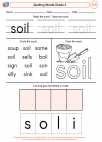
Why is Spelling Important? It is important to spell words correctly when writing. There are some words that are difficult to learn and to remember how to spell correctly. Homonyms, plurals, and possessive words are often difficult to
remember how to spell correctly.
Worksheet Spelling WordsGrade 3
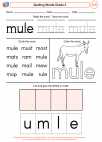
Why is Spelling Important? It is important to spell words correctly when writing. There are some words that are difficult to learn and to remember how to spell correctly. Homonyms, plurals, and possessive words are often difficult to
remember how to spell correctly.
Worksheet Spelling WordsGrade 3
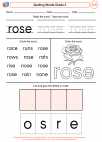
Why is Spelling Important? It is important to spell words correctly when writing. There are some words that are difficult to learn and to remember how to spell correctly. Homonyms, plurals, and possessive words are often difficult to
remember how to spell correctly.
Worksheet Spelling WordsGrade 3

Why is Spelling Important? It is important to spell words correctly when writing. There are some words that are difficult to learn and to remember how to spell correctly. Homonyms, plurals, and possessive words are often difficult to
remember how to spell correctly.
Worksheet Spelling WordsGrade 3
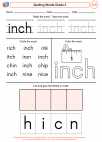
Why is Spelling Important? It is important to spell words correctly when writing. There are some words that are difficult to learn and to remember how to spell correctly. Homonyms, plurals, and possessive words are often difficult to
remember how to spell correctly.
Worksheet Spelling WordsGrade 3
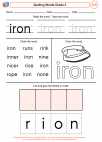
Why is Spelling Important? It is important to spell words correctly when writing. There are some words that are difficult to learn and to remember how to spell correctly. Homonyms, plurals, and possessive words are often difficult to
remember how to spell correctly.
Worksheet Spelling WordsGrade 3
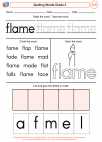
Why is Spelling Important? It is important to spell words correctly when writing. There are some words that are difficult to learn and to remember how to spell correctly. Homonyms, plurals, and possessive words are often difficult to
remember how to spell correctly.
Worksheet Spelling WordsGrade 3

Why is Spelling Important? It is important to spell words correctly when writing. There are some words that are difficult to learn and to remember how to spell correctly. Homonyms, plurals, and possessive words are often difficult to
remember how to spell correctly.
Worksheet Spelling WordsGrade 3
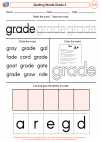
Why is Spelling Important? It is important to spell words correctly when writing. There are some words that are difficult to learn and to remember how to spell correctly. Homonyms, plurals, and possessive words are often difficult to
remember how to spell correctly.
Worksheet Spelling WordsGrade 3
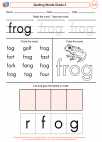
Why is Spelling Important? It is important to spell words correctly when writing. There are some words that are difficult to learn and to remember how to spell correctly. Homonyms, plurals, and possessive words are often difficult to
remember how to spell correctly.
Worksheet Spelling WordsGrade 3